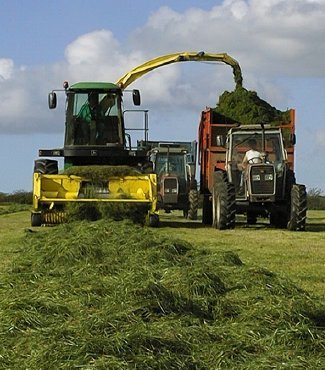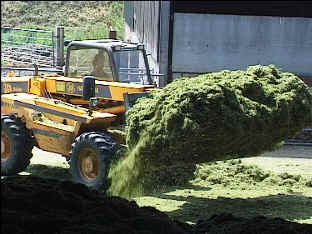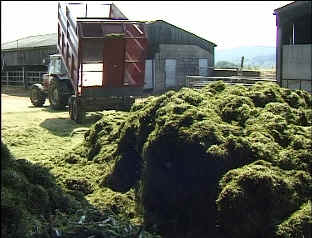 |
The precision chop method of
silage making differs in that the grass is not allowed to wilt so long as for round
baling. The time of harvesting is also more tightly controlled. A machine called a
precision chop forage harvester, gathers up the grass. The most modern of these, are self
propelled (left) and cost as much as an average size house. All precision chop
harvesters are fitted with internal rotating blades. These cut the grass into lengths
which are about 2 cm long. The machine is fitted with a discharge shoot and the grass is
fed into trailers as the harvester is going along. The
short lengths of grass take up less space and this reduces transport. The crop is also
easier to handle in the silage pit and compacts well. |

|
The trailers, which have extra
high sides to contain the grass are then taken to the pits by tractor and unloaded. Here,
the finely chopped grass is carried into the pit by a loading machine. The grass is evenly
spread in layers and rolled by the loading machine to expel the air. The exclusion of air
is vital as it allows anaerobic bacteria to flourish. These bacteria can only survive in
the absence of oxygen. The ultimate effect of the bacterial action is to pickle the silage
by fermenting it. |
 |
Harvesting grass in this way
is a high speed operation. A fleet of tractors and trailers dash backwards and forwards,
taking the loads of grass from the harvester to the pit. In principal, the faster the pit
can be filled with compressed grass, the better the silage will be. When the pit is full
it will be covered with a plastic sheet to prevent air from penetrating the silage. |
|
Continue |


